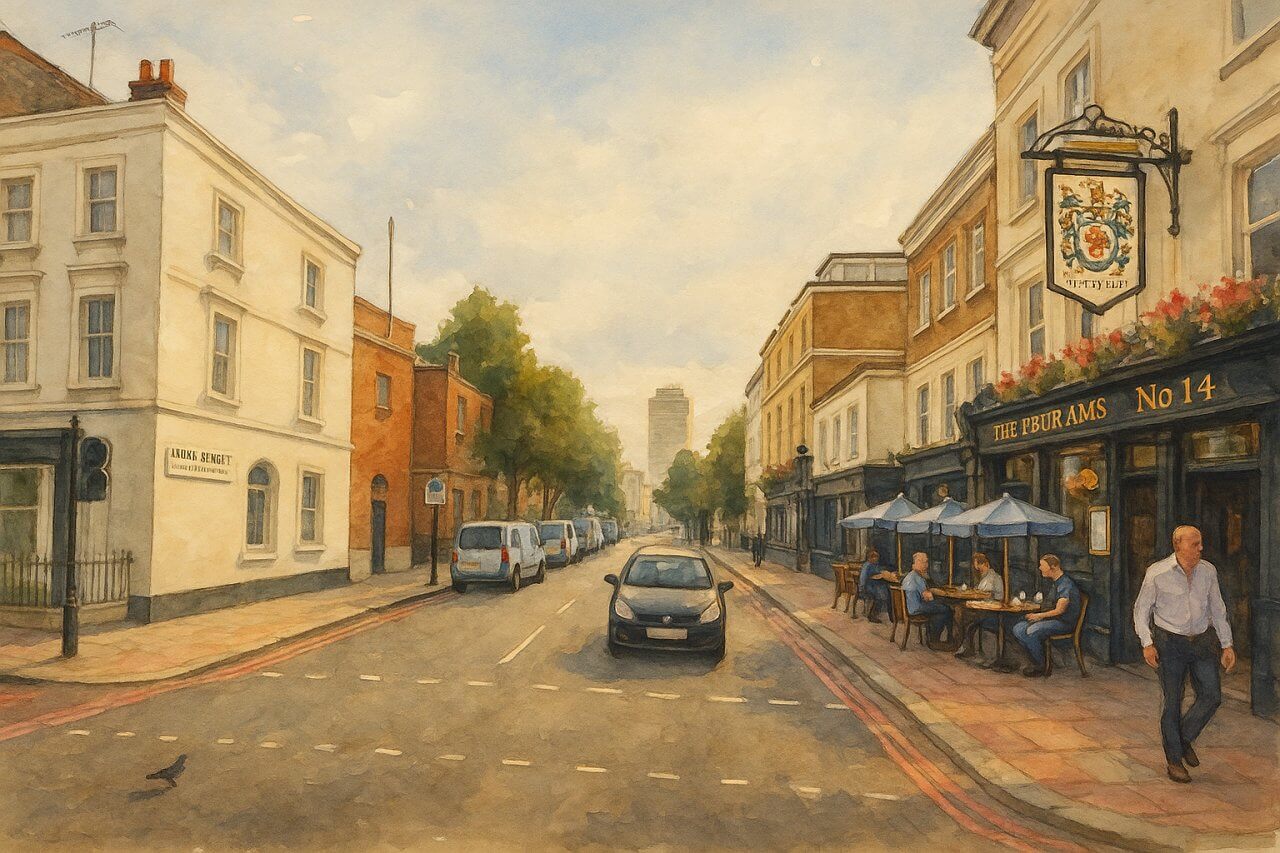
Hugh Street, London
Hugh Street is a short, attractive residential street in the heart of Victoria, within the City of Westminster. Nestled between Belgrave Road and Alderney Street, it is part of the sought-after Pimlico Grid area, characterised by elegant 19th-century architecture and peaceful surroundings.
Location and Layout
Hugh Street runs in a roughly north-south orientation, linking Belgrave Road at its northern end with Alderney Street to the south. The road is bisected by St George’s Drive, although this intersection is somewhat unique: the southern junction is restricted to bicycles and pedestrians only, with no through access for cars or motorcycles. Meanwhile, the northern section—between St George’s Drive and Belgrave Road—is closed to buses, giving the street a notably calm atmosphere despite its central location.
Length and Traffic Direction
Hugh Street measures approximately 250 metres (820 feet) in length. Vehicular traffic flows one way from Belgrave Road toward St George's Drive, and then continues southward from the southern side of St George's Drive toward Alderney Street, but again, only bicycles can cross the full length uninterrupted. This layout helps maintain low traffic levels, contributing to the street's residential charm.
History and Development
Hugh Street was developed during the mid-19th century as part of the wider residential expansion of Pimlico. This period saw the transformation of what had previously been marshy land into one of London's most distinguished urban estates, under the vision of master builder Thomas Cubitt.
How the Street Got Its Name
The precise origin of the name "Hugh Street" is not definitively recorded, but it likely honours a figure associated with the Grosvenor or Cubitt family estates. It may be linked to the name "Hugh Grosvenor", who later became the 1st Duke of Westminster. The naming dates back to around the 1850s when the surrounding area was being laid out.
Pronunciation Note
Hugh Street is straightforward to pronounce (hyoo) and rendered in the International Phonetic Alphabet as /hjuː/  .
.
Character of the Road
Hugh Street is defined by its peaceful, residential character. Flanked by white stucco-fronted Victorian terraced houses, it reflects the elegance of the wider Pimlico Grid. The lack of through-traffic and limited bus access make it quieter than many surrounding roads, despite its central location. The street is popular among professionals and retirees who seek proximity to central London without sacrificing tranquillity.
Points of Interest Nearby
While Hugh Street itself is largely residential, it lies close to several notable sights and conveniences:
- Pimlico Gardens – a small riverside park a short walk away.
- Tate Britain – one of the UK’s leading art galleries, located just beyond Vauxhall Bridge.
- Victoria Station – nearby for travel and shopping needs.
- St George's Square – a tranquil garden square popular for dog walking and quiet reflection.
Property Prices and Housing Stock
As of May 2025, homes on Hugh Street command premium prices in line with the broader Pimlico and Belgravia area. A typical two-bedroom flat measures around 750–1,000 sq ft (70–93 sq m) and can sell for between £850,000 and £1.2 million, depending on condition and exact location. Larger terraced houses, when available, often exceed 1,800 sq ft (167 sq m) and can reach prices above £2.5 million. These figures reflect the street’s desirability and close proximity to central London.
Transport Connections
Nearest Underground Stations
- Victoria Station – served by the Victoria, District, and Circle lines, and also National Rail services. Approx. 7 minutes' walk from Hugh Street.
- Pimlico Station – served by the Victoria Line. Approx. 10 minutes' walk.
Nearby Bus Stops
The nearest bus stops are located on Belgrave Road, with services including:
- Bus 24 – connecting Hampstead Heath to Pimlico.
- Bus 11 – toward Liverpool Street via Westminster and the Strand.
- Bus C10 – connecting Canada Water and Victoria.
These stops provide easy access to much of central and south London, though note that no buses travel along Hugh Street itself.
Fun Fact
A curious quirk of Hugh Street is that despite its prime location, it is often overlooked on maps and by passersby due to its relatively quiet nature. However, keen-eyed television viewers may have seen it used as a discreet backdrop in British dramas and detective series, taking advantage of its classic white façades and absence of heavy traffic.
Quick Facts
- Borough: City of Westminster
- Neighbourhood: Victoria / Pimlico Grid
- Length: Approx. 250 metres (820 feet)
- Connects: Belgrave Road to Alderney Street
- Intersected by: St George’s Drive (pedestrian/bicycle access only at southern junction)
- Public Transport: Nearby Victoria and Pimlico stations; bus stops on Belgrave Road
- Architecture: Mid-19th century Victorian terraces
- Pronunciation (Eccleston): EK-uhl-stən /ˈɛkəlstən/
- Real Estate (May 2025): Flats: £850k–£1.2M (750–1,000 sq ft); Houses: £2.5M+ (1,800+ sq ft)
- Fun Fact: Occasionally used as a film location due to its classic London look
Map of Hugh Street, London

Painting of Hugh Street, London (View image in full size)